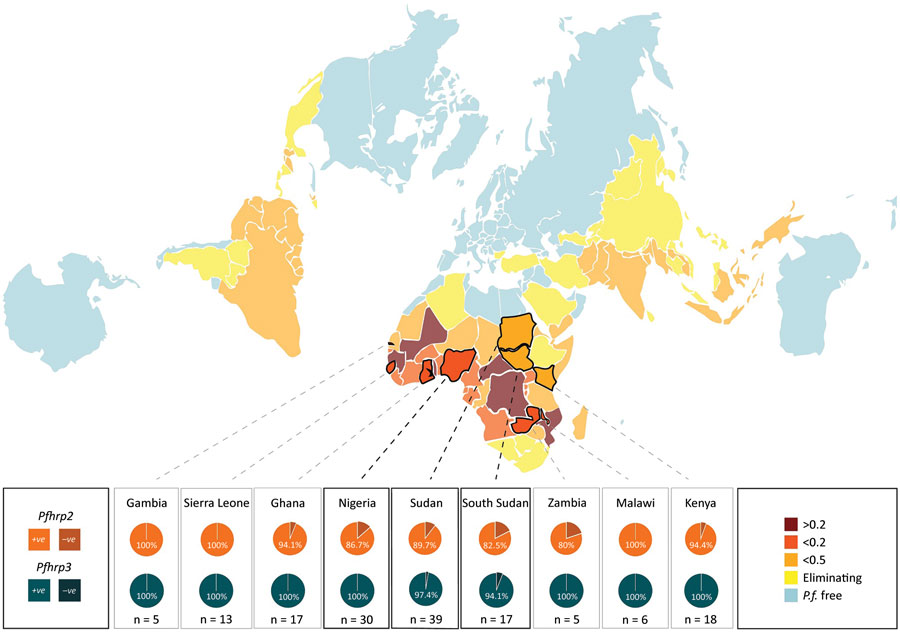Volume 27, Number 2—February 2021
Research
Plasmodium falciparum Histidine-Rich Protein 2 and 3 Gene Deletions in Strains from Nigeria, Sudan, and South Sudan
Figure 1

Figure 1. Summary of pfhrp2 and pfhrp3 deletion key results showing pfhrp2 and pfhrp3 deletion results for Plasmodium spp. isolates, by parasite country of origin (where n>4), Australia. National P. falciparum endemicity depicted is measured as population-weighted mean P. falciparum infection rate of children 2–10 years of age, using data available from the Malaria Atlas Project (http://www.map.ox.ac.uk). Data were mapped using the AuthaGraph world map projection to more truthfully visualize the potential paths of dissemination and adjacency of various endemic zones, as this is considered the most accurate representation of land proportions and relative orientations (https://hrcak.srce.hr/185867). P.f., P. falciparum.
Page created: December 22, 2020
Page updated: January 23, 2021
Page reviewed: January 23, 2021
The conclusions, findings, and opinions expressed by authors contributing to this journal do not necessarily reflect the official position of the U.S. Department of Health and Human Services, the Public Health Service, the Centers for Disease Control and Prevention, or the authors' affiliated institutions. Use of trade names is for identification only and does not imply endorsement by any of the groups named above.